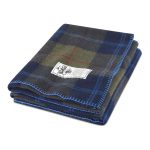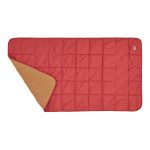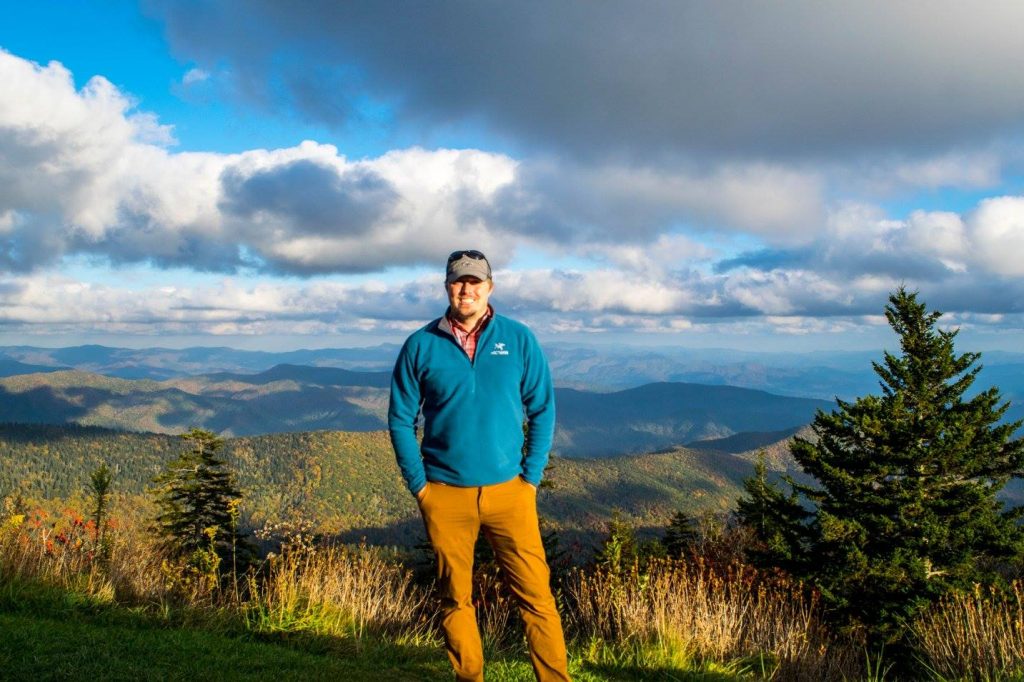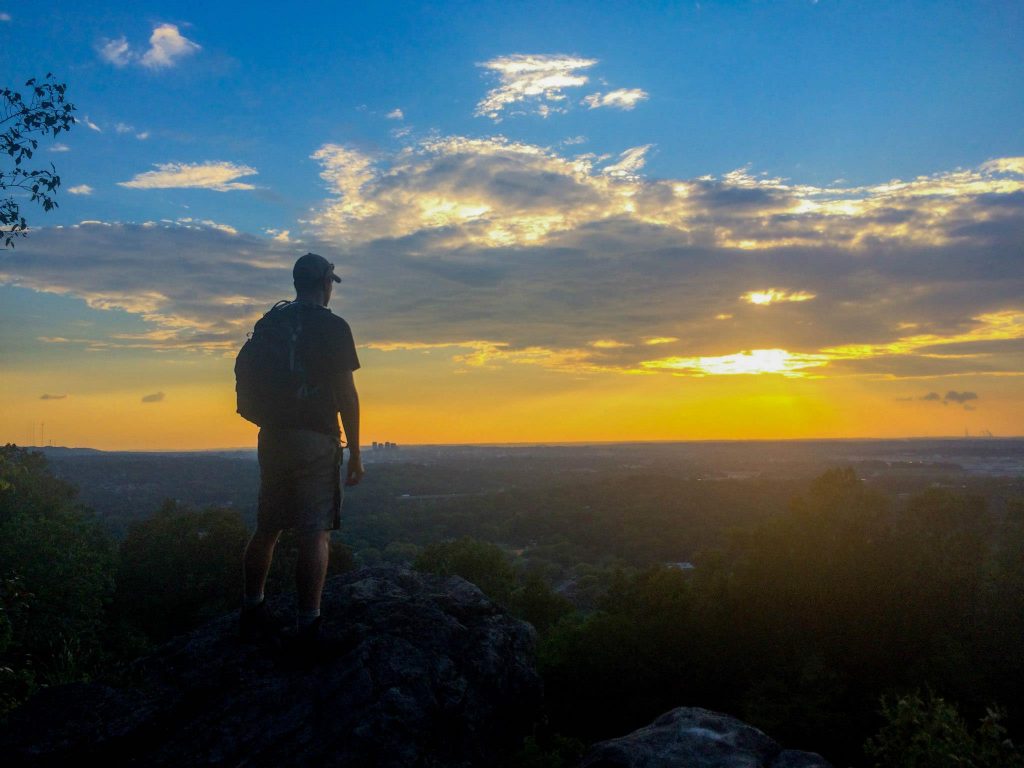How to Start Your Backyard Garden
By Natalie Ferguson
(With a background in retail and a love for wellness, travel, and the outdoors, Natalie Ferguson joined Alabama Outdoors in 2016. The Denver, Colo., native helped out with her mom’s garden growing up, and now loves growing basil and red chili peppers. Her next challenge? Growing edible flowers.)
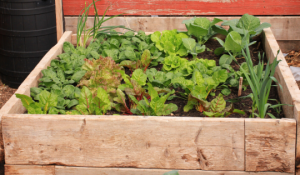 Spring has sprung in the South, as we are all staying at home, backyard gardening is just the hobby to pick up if you have not already! Growing a garden is rewarding in a variety of ways. Not only are they beautiful, but they also can help cut down on grocery bills, and can be a fun, satisfying outdoor activity for the whole family!
Spring has sprung in the South, as we are all staying at home, backyard gardening is just the hobby to pick up if you have not already! Growing a garden is rewarding in a variety of ways. Not only are they beautiful, but they also can help cut down on grocery bills, and can be a fun, satisfying outdoor activity for the whole family!
More people are turning to home gardening during the COVID-19 pandemic for both therapeutic and practical reasons, so the National Gardening Association has launched a page full of pandemic “victory garden” resources.
But here are some tips that I have picked up over the years as a backyard gardener that may help you plant the seed for years of gardening success!
Where will you plant your garden?
Begin by taking a look at the space you are working with. When planting a garden, you want to focus on the three main essentials: water, soil, and sun. If you have several options for your garden location, start by assessing the amount of sun each spot receives. Ideally, you want to pick an area that gets six to eight hours of sun each, although it is good to have some partial sun areas as well.
Another key consideration for garden location is proximity to a water source. You want to make sure it will be easy and convenient for you to water and care for it. After all, you did all the prep work to make it great!
Note: The amount of sun your garden gets determines what you can grow. There are plenty of vegetables and flowers that need full sun, plenty that only require partial sun, and some that even prefer shade. Watch your area throughout the day to see how much sun it gets and where so you can design your garden that will thrive.
Which garden method is best for you?
Depending on the space you have, there are many different methods of gardening to choose from. However, these are the three most common methods.
- Raised-bed garden. These are great because you control the soil. That means you can ensure you are buying the best soil for what you are trying to grow. Raised beds also drain well and help reduce the likelihood of damage caused by animals and pests. This method is more pricey upfront and may take a little more time if you build them yourself, but it’s worth it in the end for the plants and vegetables!
- Container garden. This space-saving option offers a lot of versatility. Depending on the size and material of the container, you can easily move these around your yard to catch the sunlight as needed.
- In-ground garden. This old-school method is the most cost-effective as you won’t have to buy as many supplies. You do not have to build anything and you already have soil. However, you have less control over soil and sunlight coverage.
What should you grow?
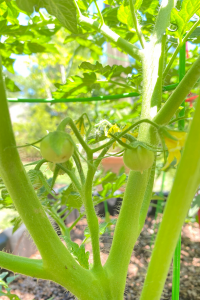 Grow what you want to eat! You will care more about the success of your garden if you are craving cucumbers and tomatoes this summer! You can buy plants that have already been started, called set plants or transplants; or, you can buy seeds to plant and grow on your own. While buying seeds is inexpensive, pay attention to the growing season of each plant as they do take time to mature and grow.
Grow what you want to eat! You will care more about the success of your garden if you are craving cucumbers and tomatoes this summer! You can buy plants that have already been started, called set plants or transplants; or, you can buy seeds to plant and grow on your own. While buying seeds is inexpensive, pay attention to the growing season of each plant as they do take time to mature and grow.
If you are a beginner or want a vegetable garden for the summer, I recommend buying set plants to start. Here are some common and easy to manage options along with the sun requirements.
Vegetables
- Full sun (6-8 hours): tomatoes, cucumbers, peppers, squash
- Partial sun: beans, carrots, cabbage, onions
- Light shade (2-3 hours of sun): kale, lettuce, spinach, brussels sprouts
Herbs
Basil, chives, rosemary, mint, parsley, and sage are all common choices and easy to maintain.
Flowers
Annuals are fun to buy because you can change your garden every year. Perennials cost more upfront but come back year after year. There are some flowers that you can add to your vegetable garden to add beauty or even deter pests.
Create your shopping list
Make a list of everything you need before you go. Overspending at the nursery is so easy to do if you don’t have a plan. When you are making your list, be sure to keep in mind soil preparation items, topsoil (if need be), any fertilizers you may need, and tools to do the job. And, since you will be outside tending your garden, make sure to protect your skin from too much sun and pests.
Plan your shopping trip and your gardening day
Dedicate a half-day so you have time to wander through the nursery. They are fun to browse and you can take your time to make sure you get everything you need.
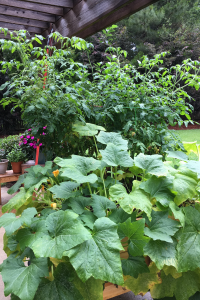 Also, give yourself a whole day to build your garden. This could be a great Mother’s Day activity, hint hint!
Also, give yourself a whole day to build your garden. This could be a great Mother’s Day activity, hint hint!
Whenever you take your plants home (if you didn’t buy seeds), it is best to place them in your garden area and space where you intend to plant them. This way you can see if you like how it is designed, and they can acclimate to their new outside environment. Let them adjust for a day or two in their pots they came in before planting, but remember to water them.
No space outside for a garden?
Bring the outdoors indoors! For those who do not have an outdoor garden, there are plenty of herbs, plants, and succulents that thrive indoors as well! Check out these tips for a beginner’s guide to indoor gardening!
Helpful tip: Did you know that you can get your soil tested for free? You can submit a routine soil analysis that will tell you what you need to add to your soil for your plants to thrive. The Alabama Cooperative Extension System is one of our go-to resources for anything gardening. Check out this helpful calendar to help you plan!
Family activity: My Mom says, “There is nothing better than getting a packet of sunflower seeds or pumpkin seeds and planting them with your children. It is such a fun activity for the kids and it is just magical to watch them grow together.”
We want everyone to enjoy the outdoors, and we work to build loyalty one connection at a time. Visit one of our stores or shop online and take advantage of curbside pickup and free shipping for orders over $69.99. #BeOutdoors
 Whether going out for a week-long backpacking trip or just heading to a local trail for an afternoon
Whether going out for a week-long backpacking trip or just heading to a local trail for an afternoon This principle helps limit erosion that can severely damage ecosystems we love spending time in.
This principle helps limit erosion that can severely damage ecosystems we love spending time in. 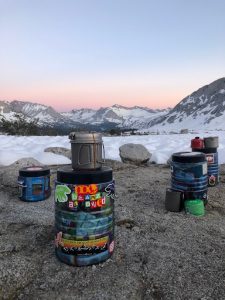 A common misconception is that it is okay to leave behind trash in a fire pit, but even that can disrupt the natural environment. It may attract animals and desensitize them to people, emboldening them to get dangerously close.
A common misconception is that it is okay to leave behind trash in a fire pit, but even that can disrupt the natural environment. It may attract animals and desensitize them to people, emboldening them to get dangerously close. 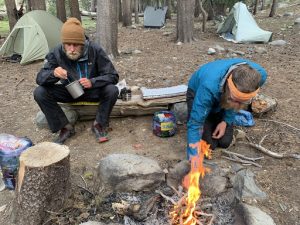 Poorly managed, they can also be one of the most destructive and hazardous activities we can do in the outdoors, so it is crucial we know what we’re doing if we’re going to make a fire at all. (Sometimes it’s best not to!)
Poorly managed, they can also be one of the most destructive and hazardous activities we can do in the outdoors, so it is crucial we know what we’re doing if we’re going to make a fire at all. (Sometimes it’s best not to!)  Animals should have a natural and healthy fear of humans to keep them from getting too curious and as a result too close to people. We should never pet or chase wildlife.
Animals should have a natural and healthy fear of humans to keep them from getting too curious and as a result too close to people. We should never pet or chase wildlife.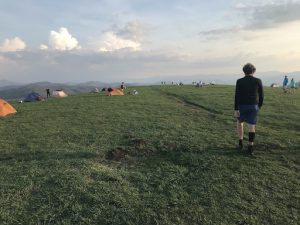 We can do this by wearing headphones instead of blasting music through a speaker, keeping pets on leashes, and keeping voices at an appropriate level. It is also important to know good hiker etiquette. Hikers are to yield to mountain bikers and horseback riders. Downhill hikers are to yield to uphill hikers so the hikers working the hardest (uphill) don’t lose their momentum.
We can do this by wearing headphones instead of blasting music through a speaker, keeping pets on leashes, and keeping voices at an appropriate level. It is also important to know good hiker etiquette. Hikers are to yield to mountain bikers and horseback riders. Downhill hikers are to yield to uphill hikers so the hikers working the hardest (uphill) don’t lose their momentum. I’ve been there many times, whether at a concert, an event, or on a trail. I spend so much time trying to get the best shot, that I don’t appreciate what is in front of me. Then I wonder, “Did I miss something?” I have the photo, but it doesn’t mean that much anymore because I may have missed being part of the moment.
I’ve been there many times, whether at a concert, an event, or on a trail. I spend so much time trying to get the best shot, that I don’t appreciate what is in front of me. Then I wonder, “Did I miss something?” I have the photo, but it doesn’t mean that much anymore because I may have missed being part of the moment.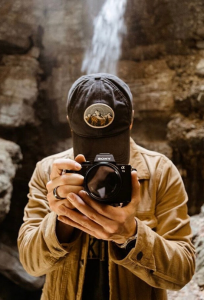 Unless you’re trying to submit something to National Geographic, you just need the basics.
Unless you’re trying to submit something to National Geographic, you just need the basics. or thinking about fixing their hair or how sweaty they are. Capture the real moments. Here are some tips on getting candids, whether you’re on a walk, making crafts with your kids, or watching them play in the backyard.
or thinking about fixing their hair or how sweaty they are. Capture the real moments. Here are some tips on getting candids, whether you’re on a walk, making crafts with your kids, or watching them play in the backyard. One of the great things about yoga is that it can be tailored so you get what you need from it.
One of the great things about yoga is that it can be tailored so you get what you need from it.  If you are looking for a fun, new backyard game that gives you an excuse to be outside and an opportunity for some exercise, give disc golf a try.
If you are looking for a fun, new backyard game that gives you an excuse to be outside and an opportunity for some exercise, give disc golf a try. 
 Unplugging in nature feels like the ultimate carefree adventure, but we still need to do our part to keep public lands beautiful and wild.
Unplugging in nature feels like the ultimate carefree adventure, but we still need to do our part to keep public lands beautiful and wild. We all love sharing beautiful places with the ones we love. But instead of trampling native plants to get the perfect shot on
We all love sharing beautiful places with the ones we love. But instead of trampling native plants to get the perfect shot on



